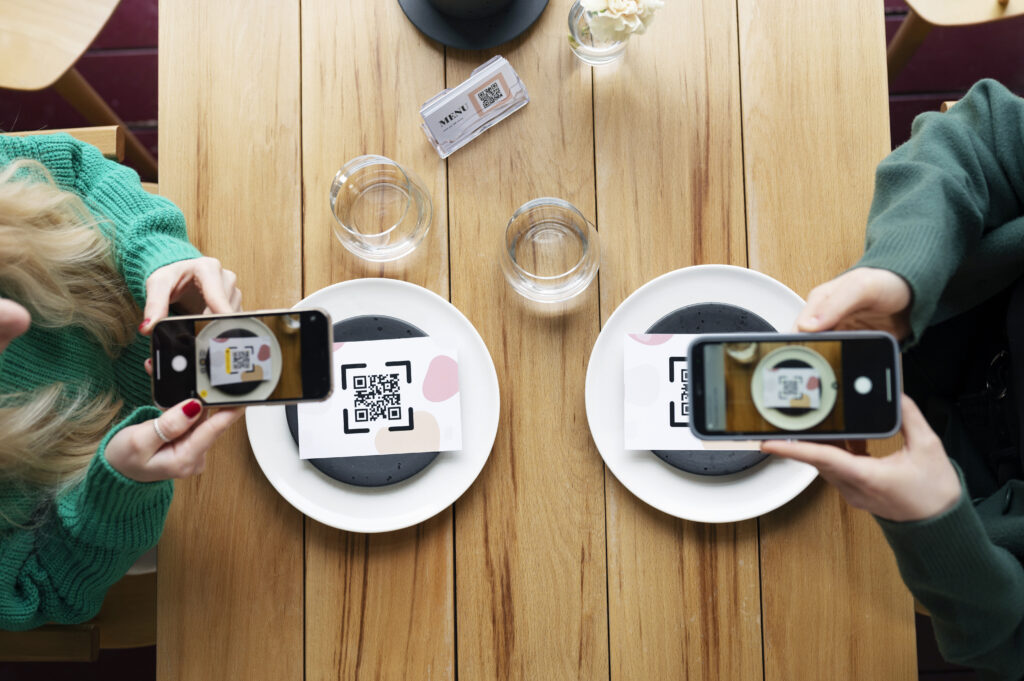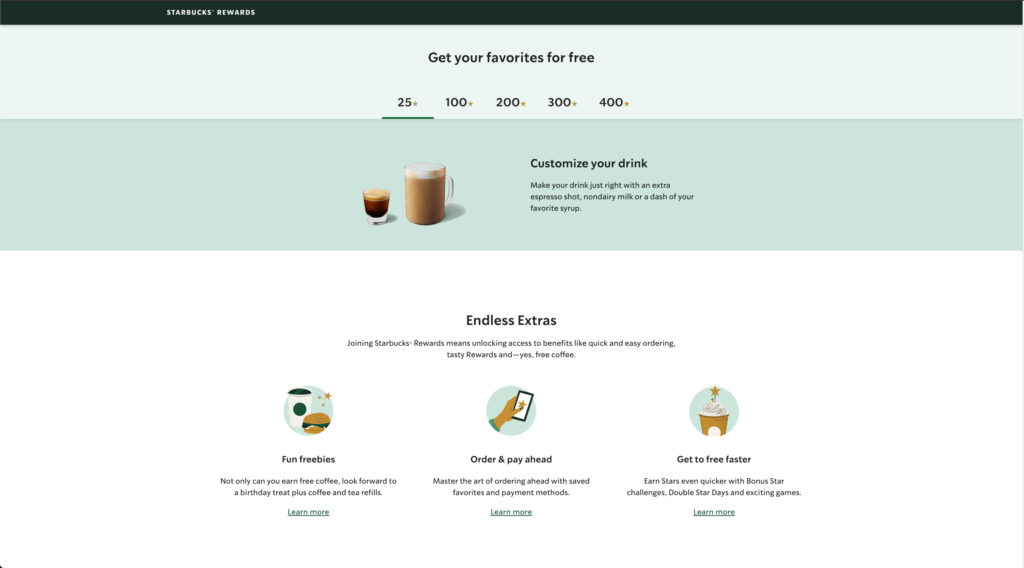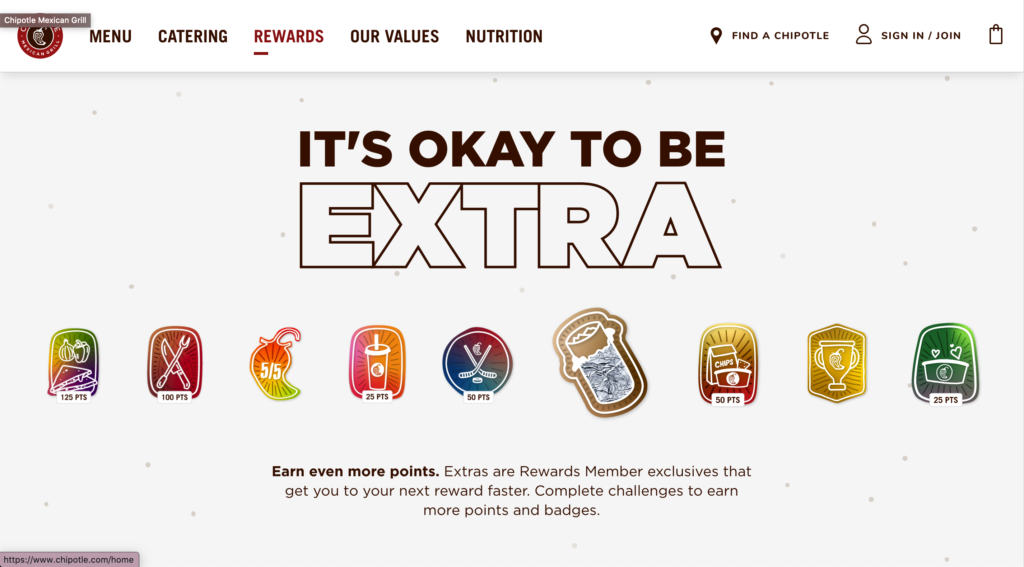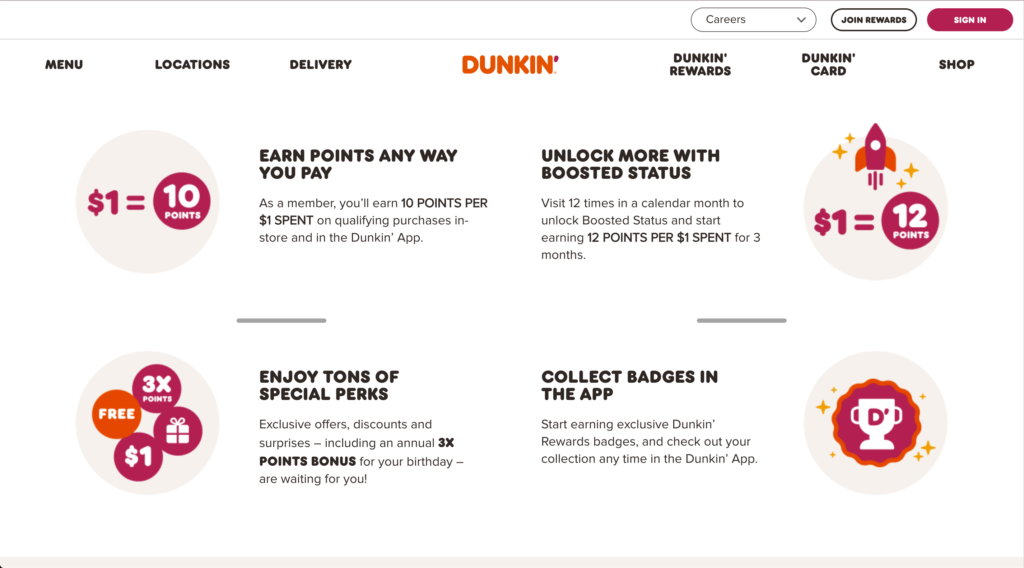
Let’s face it: if you’re not making your customers feel like VIPs, they’re just going to skip out to the next place that rolls out the red carpet!
So, how do we make customers feel like VIPs? How do we, figuratively speaking, roll out the red carpet for them? Two words, loyalty program. Simple as that.
In today’s competitive restaurant industry, restaurant loyalty programs have emerged as essential tools for attracting and retaining customers. Research highlights that nearly half of (47%) loyalty program members engage with their memberships multiple times a month, and about 32% use them several times a week. What does this tell us? High demand for rewards means restaurants must differentiate their loyalty programs.
Let’s look at the best types of loyalty programs for restaurants in 2025, how it can add value to your business, and what customers want from them.
What Customers Want From A Restaurant Loyalty Program
If your restaurant loyalty program isn’t pulling in new customers or keeping regulars, it might be time to rethink your strategy. Customers today want more than free appetizers; 75% of consumers say they would switch brands for a more rewarding loyalty program, showing just how much these incentives matter.
So, what exactly do customers want? It comes down to a few key factors when it comes to knowing how to increase customer loyalty in restaurant:
- Enticing rewards that go beyond discounts
When it comes to loyalty programs for restaurants, customers expect more than just simple discounts—they want a variety of rewarding experiences. While freebies and discounts remain a favorite, they aren’t the only way to capture customer loyalty. Studies show that loyalty program members spend up to 40% more than non-members, and those who join a loyalty program are 47% more likely to make a second purchase.
In today’s market, offering flexibility in rewards is key. Beyond discounts, consumers appreciate perks like early access to sales, exclusive product launches, and even surprise gifts. Knowing how to create a customer loyalty program that is well-rounded not only keeps customers engaged but also fosters a stronger emotional connection to your restaurant, encouraging repeat visits and increased spending.
- Hassle-free usage and customer experience
Customers seek loyalty programs that are easy to use, with simple sign-up processes and intuitive navigation. A hassle-free experience encourages engagement and repeat visits, fostering customer loyalty.
Equally important is the overall customer experience. Research shows that 55% of customers are more inclined to remain loyal to brands with which they feel an emotional connection. Moreover, 74% believe that customer service is essential for maintaining their loyalty. Negative experiences, on the other hand, can drive customers away, as many report leaving brands due to poor service or product-related issues.
- Personalized and Experiential Rewards
Customers today expect loyalty programs to provide personalized experiences rather than generic interactions. In fact, research shows that 70% of consumers are more likely to stick around for tailored offers, and 71% expect personalization. By gathering customer data, restaurants offer exclusive perks that can build stronger customer bonds.
To connect with your customers, make it a point to address customers by their names and refine email segmentation based on their preferences. You can also collect zero-party data through online profiles or quizzes to enhance personalization. By combining personal touches with VIP experiences, your loyalty program can build lasting relationships and drive repeat business.
Best Types Of Loyalty Program For Restaurants In 2025
To truly capitalize on customer loyalty, having the right loyalty program is key to your restaurant’s success. In this section, we’ll share a variety of loyalty program ideas to inspire your strategy, along with notable examples from successful restaurants.
We’ll cover loyalty programs that boost repeat visits and build long-lasting customer connections.. Here are the types of loyalty programs we will explore:
Points-based loyalty programs
A points-based loyalty program is a great way for customers to accumulate points for each dollar (or equivalent) spent–or even just by stopping by your restaurant. Typically, customers earn points based on what they spent, and then these points can be redeemed for fun rewards like free menu items, discounts, or exclusive perks.
For example, once a customer hits a certain number of points, they might be eligible for a free drink, dessert, or even a percentage off their total bill. This setup keeps the process straightforward while encouraging repeat visits and rewarding loyal customers.
Suitable for:
- Coffee shops: Establishments that thrive on daily visits can attract regulars through a points-based approach.
- Fast food chains: Quick-service restaurants can easily implement a points system to reward frequent diners.
- Casual dining restaurants: Restaurants that have a steady flow of customers and aim to encourage repeat visits can benefit significantly from this type of program.
Benefits:
- Encourages repeat purchase: Customers earn points with each purchase, driving them to return more frequently.
- Flexibility in rewards: Restaurants can offer various incentives, from discounts to exclusive experiences, tailored to their customer base.
- Enhances engagement: Customers can earn points for activities beyond purchases, fostering stronger relationships and brand loyalty.
- Gathers customer insight: Points-based loyalty programs provide valuable data about buying habits, enabling personalized marketing strategies.
Drawbacks:
- Cost implications: Offering rewards incurs costs, and restaurants need to evaluate whether benefits outweigh these expenses.
- Fraud risks: Loyalty points can be misused. Implementing strong security measures, such as unique customer IDs or digital verification, can help prevent fraud.
- Management complexity: Tracking points and maintaining clear communication can become challenging as customer numbers grow. Automating the system with a user-friendly app or software can simplify management and reduce errors.
Example:
Starbucks knows how to make customers feel valued with its points-based program. Members receive extra star points on their birthdays and can enjoy “double star days” where they earn points at an accelerated rate.
The Starbucks app simplifies the process of tracking points and redeeming rewards, enhancing customer experience and encouraging brand loyalty. By personalizing offers based on previous orders, Starbucks creates a deeper connection with its customers, exemplifying an effective loyalty program in the restaurant industry.

Tiered loyalty programs
Tiered loyalty programs introduce various membership levels that offer progressively better rewards, motivating customers to reach specific milestones, such as spending thresholds or visit frequency. This structure creates a sense of accomplishment and encourages ongoing patronage.
Plus, tiered programs provide clear metrics to track loyalty and engagement, so you can tailor your offers based on each loyalty level. While these programs deepen existing customer engagement, they may deter new ones if they think it’s tough to reach those higher tiers. That’s why it’s vital to come up with creative ways to make it easy and inviting for everyone to participate!
Suitable for:
- Upscale dining establishments: These restaurants can create a sophisticated and exclusive atmosphere, appealing to customers who seek premium dining experiences. The tiered structure enhances the sense of being a valued customer.
- Restaurants offering diverse services: Those that provide catering, dine-in, and takeout can tailor benefits across tiers, making it easier to reward customers based on their overall engagement.
- Small restaurants using digital platforms: Smaller businesses can implement tiered programs through loyalty apps or digital systems, allowing them to offer a structured loyalty experience without complex setups.
Benefits:
- Increased engagement: Tiered programs motivate customers to stay connected by offering escalating rewards, creating a gamified experience that appeals to their desire for status and recognition.
- Simplicity and transparency: Clear tier structures simplify the program, making it easy for customers to understand how to advance and what rewards to expect. This transparency enhances trust and participation.
- Optimized profitability: By reserving premium benefits for higher tiers, businesses can effectively manage discounts and target their most valuable customers, maximizing the return on investment for the loyalty program.
Drawbacks:
- Exclusivity concerns: Reserving attractive rewards for higher tiers may alienate lower-tier members, discouraging their participation. To avoid this, businesses can ensure even the lower tiers offer meaningful rewards, making everyone feel valued while still incentivizing higher spending.
- Data privacy risks: Collecting customer data for tiered programs poses privacy concerns. Restaurants can mitigate this by adopting strong data protection practices, ensuring secure storage, and being transparent about data use.
- Customer frustration: When customers find it challenging to meet tier requirements or perceive the rewards as inadequate, it can lead to dissatisfaction and disengagement, risking negative feedback and brand damage.To address this, businesses can offer attainable milestones and frequently update rewards to keep customers motivated and satisfied.
Example:
Subway’s MVP Rewards program allows customers to earn points for every purchase, giving them 10 points for each dollar spent. Customers receive even more points when ordering through the app, and new members are rewarded with 250 points just for signing up. The program features a tiered system with three levels—Pro, Captain, and All-Star—where customers can advance based on their accumulated points.
Subway enhances its program by offering exclusive benefits at higher tiers, such as access to branded merchandise and special promotions like free chip Fridays, adding value to customer loyalty while keeping costs manageable for the restaurant.
Promotional loyalty programs
Promotional loyalty programs entice customers by offering rewards with expiration dates, encouraging them to visit or order from restaurants within a specific timeframe. Unlike traditional loyalty programs tied to spending behavior, these rewards can be surprise promotions aimed at enhancing customer engagement during special occasions, such as birthdays, or boosting sales during slower periods.
By creating a sense of urgency and exclusivity, promotional programs effectively motivate customers to dine at your establishment, enhancing overall loyalty while generating excitement around limited-time offers.
Suitable for:
- Buffet all-you-can-eat restaurants: These venues can use limited-time offers to entice guests, especially during off-peak hours.
- Seasonal or event-based restaurants: Restaurants that host events or offer seasonal menus can benefit from time-sensitive promotions to boost engagement.
Benefits:
- Attract new customers: Promotional-based loyalty programs often use enticing offers or discounts to draw in new customers, making them feel immediately rewarded.
- Flexibility: They can be easily adjusted based on seasonal trends or customer feedback, making it easy to experiment with different incentives.
- Boosts sales: By offering limited-time deals, restaurants can effectively increase sales during slower periods.
Drawbacks:
- Short-term focus: While effective at driving immediate sales, promotional programs may not foster long-term customer loyalty, as customers may only return for discounts. Thus, businesses can integrate promotions with long-term incentives, such as converting promotional customers into regular members of a loyalty program.
- Customer expectations: Frequent discounts can lead customers to expect ongoing promotions, making it difficult to sell at full price later. To avoid this, businesses can space out promotions and offer exclusive perks unrelated to discounts, like early access to new menu items.
- Limited personalization: Promotional programs often lack personalized offers, which can reduce emotional connection. By tailoring promotions based on customer preferences or purchase history, restaurants can create a more engaging experience and build deeper loyalty.
Example:
Chipotle’s Rewards also stands out with its unique features. Launched in 2019, it initially offered 10 points for every dollar spent, requiring 1,250 points for a free meal. However, in 2021, Chipotle enhanced its program by introducing a new feature called “Extras,” which gamifies the experience through special challenges, allowing members to earn points faster.
Customers can redeem points for rewards like tortilla chips for as little as 250 points and enjoy a range of prizes, including Chipotle merchandise and contributions to noble causes. The “Race to Rewards Exchange” online game, launched alongside the updated program, allows members to collect points while playing, fostering engagement and customer retention.

Item-based loyalty programs
Item-based loyalty programs are a simple and effective way to encourage repeat purchases. Think of it like the classic punch card system: customers get rewarded for buying a specific item multiple times, with the next one free. For instance, after purchasing nine cups of coffee, the customer enjoys the 10th cup at no charge.
Alternatively, businesses can implement a points-based system that allows customers to accumulate points through their purchases. Once they reach a certain threshold—say, 50 points—they can redeem them for a specific item, like a complimentary doughnut. This keeps customers engaged and incentivizes them to return for their favorite items while fostering brand loyalty.
Suitable for:
- Restaurants with signature items: Perfect for pizza, taco, or burger restaurants, where certain dishes are customer favorites.
- Quick-service and fast-casual restaurants: Especially suited for places that focus on specific menu categories like drinks, desserts, or snacks.
Benefits:
- Drives focus on popular items: Encourages repeat purchases of high-margin or signature dishes, boosting sales on profitable menu items.
- Simple and clear: Easy for customers to understand—order a certain number of times, and get a reward.
- Boosts customer loyalty: Offering rewards on popular items motivates customers to return frequently and earn rewards.
Drawbacks:
- Limited Appeal: Focusing on just one or two items can alienate customers who prefer variety or do not favor the highlighted items. Instead, businesses could offer a broader range of reward options, providing customers with more flexibility in how they redeem their rewards.
- Imbalanced Rewards: If the rewards are tied to specific products, they might not be universally appealing, reducing overall program participation. Providing alternative or customizable rewards can help maintain customer interest and ensure greater inclusivity.
- Stock Management: Rewarding popular items can lead to stock shortages, especially during promotions. To prevent this, businesses can implement strategic stock planning and diversify reward options to balance demand across items.
Example:
Dunkin’ Donuts showcases a successful item-based loyalty program through its DD Perks® program, which rewards customers with points for every dollar spent. These points can be exchanged for free drinks later, and members can enjoy additional perks, such as complimentary beverages after a specific number of weekly purchases.
By leveraging digital payment cards and partnerships with other businesses, Dunkin’ has significantly enhanced customer retention and engagement, with its mobile app surpassing 12 million downloads.

Frequency-based loyalty programs
Frequency-based loyalty programs work wonders for cafes, coffee shops, and fast-food joints, focusing on nurturing a loyal customer base by rewarding patrons based on their visit frequency.
Not only does this boost repeat business, but it also gives customers a sense of achievement as they work towards unlocking those rewards. It’s a win-win for both your customers and your restaurant!
Suitable for:
- Cafes and coffee shops: Perfect for businesses where customers frequently make low-cost purchases like coffee or snacks.
- Casual dining restaurants: Especially effective for places like sushi bars, where regular visits can be rewarded with appetizers or other perks.
Benefits:
- Boosts Repeat Business: By offering rewards based on visit frequency, these programs motivate customers to return more often.
- Creates Customer Habit: As customers aim to reach the reward threshold, they develop a habit of dining at your restaurant, leading to long-term loyalty.
- Flexible and Easy to Implement: The program is easy for both customers and staff to understand and execute.
Drawbacks:
- Lower Customer Engagement: Customers who don’t visit frequently may feel excluded or disengaged if the program is too difficult to benefit from. Hence, restaurants can offer tiered rewards or smaller incentives to keep infrequent customers engaged as they build toward larger rewards.
- Potential Exploitation: Some customers may attempt to game the system by making minimal purchases during visits to qualify for rewards. To reduce this risk, restaurants can implement minimum purchase requirements for each visit, ensuring that rewards are earned through meaningful transactions.
Example:
Panera Bread’s MyPanera Rewards is an excellent frequency-based loyalty program, boasting nearly 48 million members. It rewards customers based on their visit frequency and spending, recently introducing choice-based rewards. Members can select rewards from various options, including menu items and discounts on the Unlimited Sip Club.
This user-friendly approach enhances customer connection and personalization. Eduardo Luz, Panera’s chief brand and concept officer, emphasized that the program reflects customer preferences, aiming to create a more engaging experience.

Journey-based loyalty programs
A journey-based loyalty program is all about rewarding customers based on their specific journey or interaction with the restaurant. This type of customer loyalty program goes beyond just transactional rewards and engages customers throughout their dining experience or visits over time.
Customers earn rewards for hitting their key milestones with your brand. For example, new members might receive a welcome bonus, while long-time customers could score anniversary rewards. This setup encourages deeper engagement by recognizing actions that strengthen their relationship with your restaurant, making them feel valued every step of the way.
Suitable for:
- Full-Service Restaurants: Especially those offering diverse menus with multiple courses, such as fine dining or themed restaurants where customers’ experiences evolve over time.
- Casual Dining Establishments: Restaurants looking to build stronger connections by offering personalized incentives for returning guests or diners who try new items across the menu.
Benefits:
- Personalization: Journey-based loyalty programs allow for deep personalization, offering rewards based on customers’ individual dining habits and preferences.
- Long-Term Customer Retention: This program incentivizes customers to keep returning by recognizing and rewarding them based on their ongoing relationship with the restaurant, leading to stronger long-term loyalty.
- Customer Engagement Across Touchpoints: By rewarding different stages of the customer experience (e.g., trying new menu items, attending events, or celebrating milestones like birthdays), it drives continuous engagement and encourages diners to explore the restaurant in new ways.
Drawbacks:
- Complex Setup: Establishing a journey-based loyalty program can be complex, requiring advanced data analytics to track customer behavior and automate rewards based on their journey. To streamline this, businesses can invest in advanced customer relationship management (CRM) systems or loyalty platforms that automate data collection and reward issuance, making the process smoother and more efficient.
- Requires Robust Data Collection: These programs need detailed customer data to be effective, which can lead to privacy concerns. Hence, businesses should ensure transparency by clearly communicating how data is used and implementing strong data protection measures to build trust with their customers.
Example:
Nando’s PERi-Vilege Loyalty program rewards diners with free meals through its new mobile app. Customers can collect a “Chilli” for every RM30 spent at Nando’s outlets. The program offers escalating rewards: after collecting three Chillies, diners receive a quarter chicken; after six, they get a half chicken; and after nine, a full chicken.
To enjoy these rewards, members simply need to flash their member ID in the app when dining in. The app conveniently tracks their Chillies and streamlines the redemption process, making it an engaging way to boost customer loyalty while enjoying delicious meals.
Paid loyalty programs
Paid loyalty programs allow customers to subscribe for exclusive perks, enhancing their dining experience. For a monthly or annual fee, members can enjoy benefits like special discounts, free delivery, or early access to new menu items.
This model creates a sense of exclusivity and encourages frequent visits, as they will want to make the most of their investment.
Suitable for:
- Gourmet Eateries: Perfect for restaurants that focus on specialty cuisines, as customers may be more willing to pay for exclusive access to unique dishes or events.
- Loyal Customer Base: Best suited for restaurants with a strong brand identity and a dedicated following, where customers appreciate added value through membership perks.
- Frequent Visitors: Effective for businesses that attract regular patrons who will benefit from exclusive discounts or early access to menu items.
- Commoditized Offerings: Suitable for businesses operating in markets where differentiation is limited, similar to how Shell and Petronas compete in the fuel sector.
Benefits:
- Increased Revenue: The upfront fees provide immediate financial support and can help cover the costs of exclusive benefits.
- Customer Loyalty: Members feel valued through their exclusive access, which strengthens their connection to the restaurant.
- Predictable Cash Flow: Subscription fees can stabilize income and help in forecasting financial performance.
Drawbacks:
- Limited Audience: Not every customer is willing to pay for loyalty perks, potentially excluding casual visitors. To counteract this, restaurants can offer trial periods or tiered memberships, allowing customers to experience the benefits before fully committing to a paid plan.
- Operational Complexity: Managing a subscription service can require additional resources and careful planning to ensure a positive experience. Businesses can streamline this by using subscription management software, which helps automate renewals, billing, and member communication, reducing the burden on staff.
- Staff Training: Staff will need to be trained to sell this membership effectively. Proper training will ensure they can communicate its value and benefits to customers, thereby driving enrollment.
Why Loyalty Programs Matter for Restaurants
Loyalty programs go beyond simple rewards—they help build lasting customer relationships and provide key insights into their preferences. These insights allow you to refine your offerings, boost engagement, and drive repeat business.
Now, let’s dive into why these programs are crucial for your business growth.
- Boost customer retention
Restaurant loyalty programs are a game changer for boosting customer retention. By offering rewards, discounts, or exclusive perks, they give customers a reason to keep coming back.
These types of loyalty programs not only help build a loyal customer base but also save costs compared to constantly bringing in new customers. The result? Stronger relationships with your customers and steady growth for your business.
- Drive sales and revenue
Restaurant loyalty programs are more than just a marketing tool; they can be a game-changer for driving sales and revenue. Research shows that returning customers not only cost less to maintain but also significantly increase your bottom line—loyal customers typically spend 67% more than first-time diners.
By implementing a well-structured loyalty program, you can motivate guests to visit more frequently and spend more during each visit. In fact, 64% of loyalty program members say they spend more per transaction to maximize their rewards.
- Stand out in a crowded market
Restaurant loyalty programs give you a valuable competitive advantage in a highly competitive industry. Diners often decide where to eat based on the rewards or incentives they’ll get from a loyalty program.
Offering exclusive perks or enticing rewards can set your restaurant apart from others, giving you the edge over competitors and encouraging customers to choose your establishment more often.
- Leverage the power of word-of-mouth marketing
Word-of-mouth marketing is a powerful tool in the restaurant industry. Satisfied customers not only enjoy their dining experience but are also likely to share their positive experiences with friends and family.
With loyalty programs in place, you can boost this effect by rewarding customers for referring others. When diners feel appreciated, they’re eager to spread the word, bringing in new patrons without hefty advertising costs.
- Unlock valuable consumer data to make better decisions
Loyalty programs are invaluable for gathering customer-level data, and providing insights beyond simple sales figures. By capturing detailed information like purchase history and preferences, these programs allow you to make informed decisions tailored to your diners’ needs.
Utilizing this data enables you to refine your menu, adjust marketing strategies, and create targeted promotions, ensuring that you meet customer expectations effectively. This personalized approach not only enhances the dining experience but also drives engagement and fosters lasting loyalty.
- Build trust
Building trust with your customers is essential for long-term success, and loyalty programs are an effective way to achieve this. These programs prioritize personalization and authentic customer care, showing diners that they are valued as individuals. When customers feel appreciated, they are more likely to return for their favorite meals, creating a solid base of loyal patrons.
By developing a loyalty program that encourages community engagement and actively gathers customer feedback, your restaurant can cultivate enduring relationships that keep diners coming back.
- Smarter inventory management
Effective inventory management is crucial for controlling costs, restaurant loyalty programs can help streamline this process. By tracking customer preferences and order patterns through your loyalty program, you can gain valuable insights into which menu items are most popular. This allows you to adjust inventory levels accordingly, minimizing food waste and cutting down on unnecessary expenses.
Leveraging the data from your loyalty program not only helps you optimize your stock but also ensures you’re consistently offering the items your customers love, further boosting satisfaction and retention.
- Promote upselling
Upselling is a sales technique that encourages customers to purchase a more expensive item or add additional items to their order. It’s a strategy that can significantly increase average transaction values and enhance the overall dining experience.
By implementing a restaurant loyalty program, you can motivate diners to increase their cart value through rewards. For instance, a customer might receive a small discount for an RM150 order but discover that spending RM300 unlocks a greater reward. This incentivizes them to opt for higher-priced menu items or extras, ultimately boosting your restaurant’s revenue.
Unlock a lifetime of customer retention with SimpleLoyalty, a platform that simplifies loyalty programs for businesses of all sizes. Start your loyalty program today!

